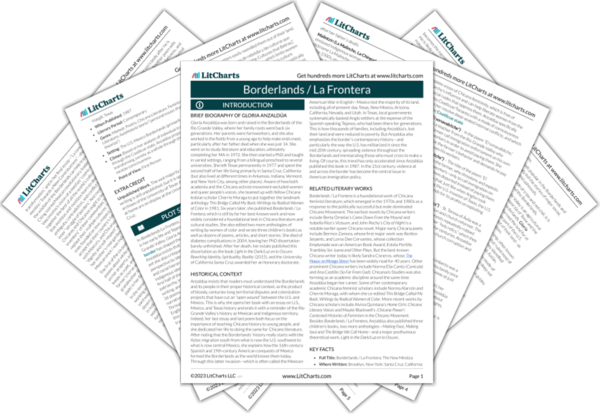Previous
Part 1, Section 2: Movimientos de rebeldía y las culturas que traicionan
|
Previous
Part 1, Section 2: Movimientos de rebeldía y las culturas que traicionan
|
Borderlands / La Frontera: Part 1, Section 3: Entering into the Serpent Summary & Analysis |
Next
Part 1, Section 4: La herencia de Coatlicue / The Coatlicue State
|
